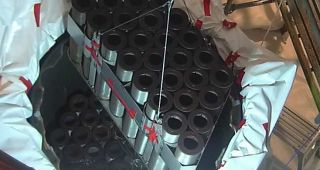Construction of the IAEA’s international training center for nuclear security is expected to be completed by the end of this year. (Photo: C. Daniels/IAEA)
Construction of the International Atomic Energy Agency’s new Nuclear Security Training and Demonstration Centre (NSTDC) is nearing completion in the town of Seibersdorf, Austria, near the capital city of Vienna. The IAEA expects construction to be finished by the end of the year, allowing for the facility to open and be operational by late 2023.
Growing interest in security: The NSTDC will offer advanced training in nuclear security, including training in implementing complete nuclear security projects on the threats of nuclear terrorism and the illicit trafficking of radioactive materials. Elena Buglova, director of the IAEA Division of Nuclear Security, said, ”This Centre will enable the IAEA to effectively respond to the ever-increasing requests by countries for practical nuclear security training. Its construction would not be possible without the funds and the support of donor countries [Belgium, Saudi Arabia, South Korea, the United Kingdom, and the United States], which has transformed the NSTDC idea into an actual facility, where specific nuclear security training courses will be offered soon to participants from all over the world.”
Hands-on training: The center plans to offer approximately 50 courses to about 1,000 trainees every year. These courses include physical protection of nuclear material and facilities, nuclear security for radioactive sources, nuclear forensics and crime scene management, nuclear security measures in preparation for large public events, computer security, and security when transporting nuclear and radioactive materials. The hands-on training will emulate security systems used at nuclear power plants, research reactors, and border crossings.
Security agreement: The international requests for nuclear security training have been prompted partly by the Amendment of the Convention on the Physical Protection of Nuclear Material (A/CPPNM), which went into effect in 2016. This agreement “establishes legal obligations for Parties regarding the physical protection of nuclear material used for peaceful purposes during international transport; the criminalization of certain offences involving nuclear material; and international cooperation.” Another factor behind the growing interest in nuclear security and safety has been the spread of increasing amounts of nuclear and radioactive materials used in nuclear power programs and research reactors.







